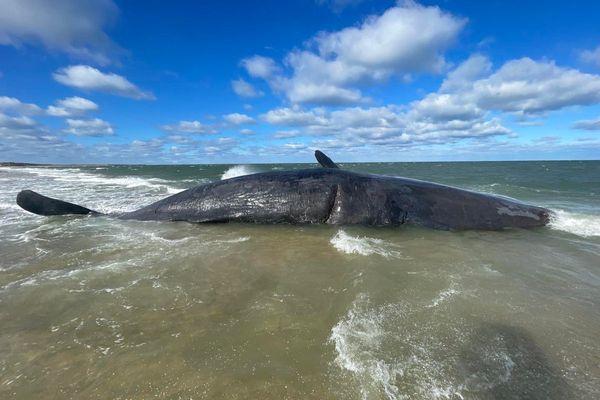
French scientists are mapping plankton across the Indo-Pacific – using Navy ships to study the microscopic organisms that produce half of Earth’s oxygen, feed the ocean and help regulate the planet’s carbon. The eight-year mission is charting life in remote waters to understand how these drifting ecosystems evolve – and why they matter.
Since 2022, Mission Bougainville has been turning French Navy ships into floating science labs.
Recent graduates from the Sorbonne are stationed on board as biodiversity cadets. They work alongside the crew, collecting and studying plankton as the ships patrol thousands of kilometres of open sea.
One of those ships, the Champlain, sailed in June to the Scattered Islands near Madagascar – a remote string of French territories the Navy supplies and protects. The vessel usually patrols for illegal fishing and drug trafficking. Now, it also carries young scientists and plankton-sampling gear.
These minuscule organisms may be invisible to the naked eye, yet their role is immense. They absorb carbon dioxide, produce around 50 percent of the oxygen we breathe, and form the base of the marine food chain. Yet much remains unknown, especially how plankton responds to environmental change.
Mission Bougainville focuses on France’s vast Exclusive Economic Zones in the Indo-Pacific – a maritime area that spans from the Indian Ocean to the South Pacific and gives France one of the largest ocean territories in the world.
The project also has researchers aboard other Navy ships operating between French Polynesia and New Caledonia, territories that offer access to far-flung waters still largely unstudied.
Nations vow to cut shipping noise as sea life struggles to be heard
Charting life on the move
The mission builds on work by the Tara Ocean Foundation, which changed how scientists understand plankton. But Bougainville takes it further by using the Navy’s existing routes to access under-researched zones and collect data over time.
“The big difficulty with plankton is that you have to study it everywhere. It moves fast, adapts fast and you cannot understand it without worldwide study. It’s all interconnected,” said Colomban de Vargas, a marine biologist with France’s National Centre for Scientific Research (CNRS) and co-founder of the mission.
Scientists have studied plankton for more than a century. But Bougainville’s scale and regularity are what set it apart.
Multiple Navy ships are now involved, including the Champlain and vessels operating in the South Pacific. The mission aims to gather around 100 samples per ship each year through to 2030 – enough to build a global database covering millions of square kilometres.

A major focus is what researchers call the “island effect”. The Indo-Pacific is dotted with islands and underwater mountains. In many parts of the ocean, nutrients are scarce. But land masses release material that acts like fertiliser – triggering blooms of phytoplankton.
These blooms can float for weeks and are large enough to be seen from space.
“Islands change the composition of plankton over tens, hundreds of kilometres. They create an ecosystem that moves through the ocean for weeks before disappearing, then being created again. They’re like moving forests,” said de Vargas.
These ecosystems move across the ocean, then vanish and reappear elsewhere. Scientists are now trying to understand how they form, whether they follow patterns, and how they change over time.
Plankton don’t choose where they go – they drift with the currents. That makes each island a kind of natural lab. “Each of these islands is a test tube, ideal terrain for science,” said de Vargas.
Niue, the tiny island selling the sea to save it from destruction
Climate and geopolitics
By taking repeated samples across different seasons and locations, researchers can learn how plankton adapt to changing conditions – from rising temperatures to shifts in ocean chemistry.
“Differences in plankton composition will affect the entire ecosystem, consequently affecting the economy of different territories and therefore global geopolitics,” said de Vargas.
But researchers stress that this work is still in its early stages. It will take years of sampling and analysis before the full picture becomes clear.
“You have to understand the basic functional aspects of plankton before talking about its evolution or adaptation,” de Vargas added.
Mission Bougainville is set to continue through to 2030.
This article was adapted from the original version in French by RFI's Titouan Allain







